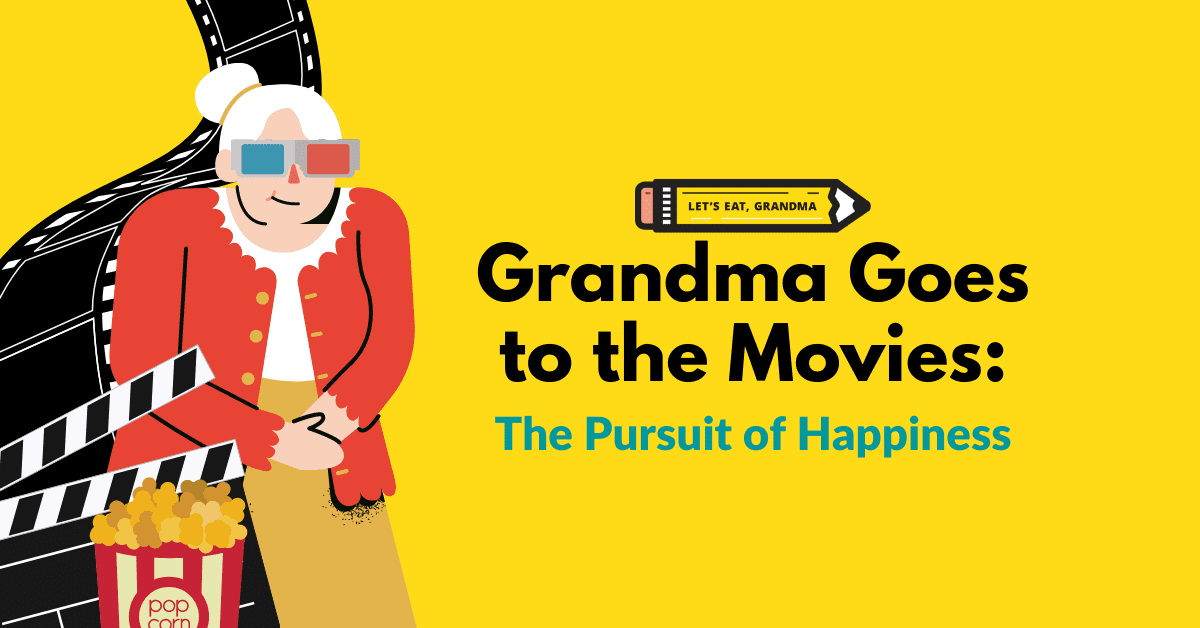Grandma Goes to the Movies: Making an Impression with the Pursuit of Happyness

Grab your popcorn! We’re headed to the movies this summer to explore the surprising job search lessons your favorite movies can teach you.
This month: our resume is your chance to show who you are and what you can do. Here’s how you can use principles from the Rubik’s Cube scene in the Pursuit of Happyness to make the most of it.
By: David Hartley | Resume Writer for Let’s Eat, Grandma
2006’s The Pursuit of Happyness (yes, it’s intentionally misspelled!) is a fascinating film. Based on the real-life struggles of Chris Gardner, it wasn’t a critical darling, but it was adored by general audiences and earned Will Smith his second Oscar nomination in five years and introduced the world to Jaden Smith.
I wouldn’t say the story as a whole left a large impression on me, as the film is largely a feel-good story, but almost 15 years later, there’s still one scene that sticks with me:
Want more job search tips? Sign up for our newsletter!
The Pursuit Of Happyness: Rubik’s Cube
It’s one of the best scenes of the film. It grips us as we sit up in our seats hoping that Chris Gardner (Will Smith) solves the cube in time and makes an impression on the man he just met.
Think about what you would say or do in front of your future employers if you had the ability to share a cab with them. You only get a few minutes, so what do you show them? Would you show off a special skill like Chris? Would you tell them about an achievement from a past job experience?
My point is that you don’t get a cab ride. Your resume is your Rubik’s Cube.
Imagine that your future employer only has the length of a cab ride to look over your resume. Is it as eye-catching as solving a Rubik’s Cube for the first time?
Every time you submit a resume, that is your cab ride. The information on your resume? Your Rubik’s Cube. Every word placed on the document needs to be correct, like the correct spin and twist of the cube. And when it’s all said and done, you (much like Chris) will impress and dazzle with your resume.
As a resume writer, I speak to clients with a variety of backgrounds, skills, and experiences. Here are few things I do to help them find their own Rubik’s Cube solution to ensure that the employers who see their resume are impressed :
1. Make sure that the most relevant information on your resume and LinkedIn is clear and impactful.
When clients come to me, they’re often struggling to clearly demonstrate their most impressive experiences on their resume or LinkedIn. I often tell them about the six-second rule. What information could a reader retain from your resume in six-seconds? Are your achievements clear and concise enough that a recruiter or hiring manager can easily pick them off the page?
I often tell my clients to read the resume as if it belonged to a prospective candidate for a position they held in the past. Would they get the job from the information detailed on the document?
2. Demonstrate your uniqueness.

Everyone can find something unique about their experience if they dig deep enough. Photo by Noah Näf on Unsplash
Another phrase I hear from the job seekers I work with is that there isn’t anything unique or special about what they did in their past. To that I say: Nonsense! Everyone has something unique if they dig deep enough.
Let me give you an example. I once worked with a hotel manager from Houston. He told me he did what other hotel managers did and was unsure what made him special. After speaking with him for a few minutes, he told me an incredible story of leading Houstonian residents displaced by a hurricane into his hotel for safety. It was an incredible story and an amazing way to show leadership on his resume.
Now I understand that everyone doesn’t have a once-in-a-lifetime story like my client, but think about the ways you impacted the companies you worked for. What processes did you improve? Who did you lead? What lasting impact did you leave? I’m sure you have a story that no one else could put on their resume.
3. Pay attention to each bullet point.
Remember: Each word is a spin or twist of the Rubik’s Cube. Every bullet point you write needs to be impactful to create the full picture of your experiences. Think about Chris solving the Rubik’s Cube. Were there any wasted spins or turns of the cube? Apply this to your resume or LinkedIn profile — are there any excessive words or bullet points that don’t serve a relevant purpose for the job you’re applying to?
Don’t lose sight of your ultimate goal here: You need to solve the cube to demonstrate why you’re an ideal candidate for each particular job, not just any job. Don’t waste resume space on anything that doesn’t help you achieve that goal. Be sure to analyze and refine your resume to ensure that every line has relevance and takes the correct steps in solving your own Rubik’s Cube.
4. Utilize your summary to its fullest potential.
Think back to the video. Does Chris dive right into the cube or does he spend a second to demonstrate his intuition before solving it? He does the latter as he says out loud “that the middle colors never move.” Right away we know Chris has a special skill, a special approach to this.
How does this apply to your resume? Use your summary to show your future employer right away that you have the unique expertise needed to succeed at the position they’re hiring for. Be sure to include keywords that introduce you as the ideal candidate before the reader gets into the meat of the resume; this sets the tone and sets you apart.
5. Connect with your employer.
Chris had the good fortune to have an employer that was fascinated by his skills with a Rubik’s Cube.
How will you make a connection with the company you’re applying to? By carefully studying the job description and researching the company.
This will prepare you by telling you what they are looking for in an ideal candidate – whether it’s technical skills, expertise, or experiences. Then you can focus on those particulars on your resume to help you get a leg up on the competition!
Needless to say, you won’t have the chance to solve a Rubik’s Cube in front of your future employer. Chris’ situation was unique to him. He was given the opportunity to show he was analytical, quick-thinking, and tenacious in the span of a few minutes of a cab ride, and he took it.
Don’t let your opportunity go to waste – make the most of your resume!
Want more job search tips sent straight to your inbox? Sign up for our newsletter here:
Better Resume.
Satisfying Career.
Happier You.
